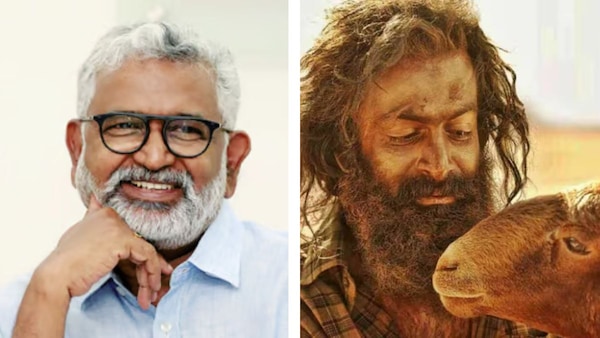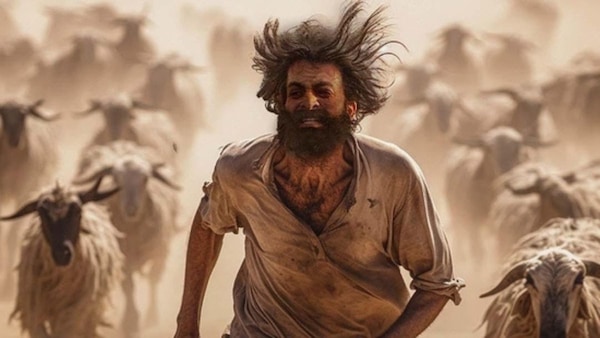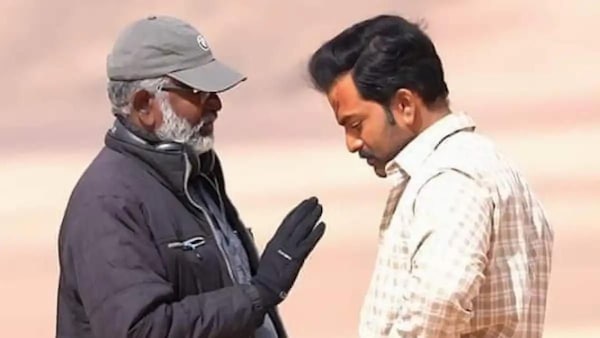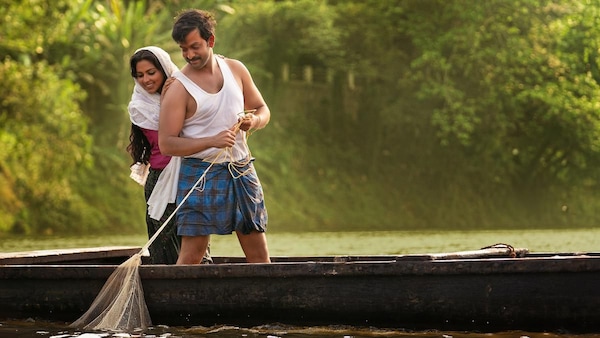Blessy On Making Aadujeevitham: Being The Writer-Director Of The Film, I Used Creativity Of My Free Will
Blessy's magnum opus Aadujeevitham is his labour of love in its truest form. It’s been a passion project that began nearly 15 years ago, and this year, the film opened to rave reviews.

Last Updated: 07.55 PM, Jul 15, 2024
ONE has to tread with extreme caution while posing questions to filmmaker Blessy. He doesn’t believe in taking things in a lighter vein and views his craft and life through an abstruse lens. Not surprisingly, they are also a reflection of his stories on celluloid. Right from his debut film, Blessy, a protégé of the legendary Padmarajan and AK Lohitadas, has shown that their influence has been deeply embedded in his craft. Be it their eye for detail, the predilection for pathos and drama, or his cathartic depiction of man-woman relationships, Blessy has crafted fascinatingly memorable family dramas that dwelled into the complexities of the mind. His magnum opus Aadujeevitham, the celluloid adaptation of Benyamin’s Goat Life is his labour of love in its truest form. It’s been a passion project that began nearly 15 years ago, and this year in March, the film opened to overwhelmingly positive reviews (with raving reviews from Mani Ratnam, Kamal Haasan, and Hariharan). When this writer tried an interview before the release, Blessy was reluctant, promising a conversation after the release. Surely, it reflected the filmmaker’s quiet confidence in his film. So here is the promised interview.
Some felt that the film was a faithful adaptation, and some felt it didn’t live up to the book. What were the challenges while writing the screenplay?
I have said this before, and I will say it again. I have not tried to copy the book as it is. And that was never the plan also. Take Akiro Kurosawa’s Throne of Blood—Lady Macbeth is shown as pregnant but that is not the case. A filmmaker should be allowed to make such creative choices. I think it is advisable to view the film separately from the book. Even when we maintain that it is Najeeb’s life, the truth is that a lot of imagination has also gone into it. Take Hakeem for instance—If Najeeb says he is alive, where is he now? So the writer implies that he is dead. Also, it was a North Indian who rescued them, not Ibrahim Kadari. But no one asks these questions. No one noticed how I fleshed out Sainu’s character and emblematically maintained their relationship through the mango pickle he was consuming in her memory. That is his hope for life.
What are the perceptible add-ons you feel helped in the celluloid adaptation?
In the book, no vultures are fighting over the dead body. The body is discovered when the goats are fighting among themselves. But I added this as I felt it would be more effective on screen. In the book, after seeing his body, he rushes to the Kafeel, hugs him, and says he will stay there as a slave. But in my version, Najeeb would rather die than stay there. When he says he will live as a slave is different from someone who says he wants to escape even if he meets death.

There seems to be some amount of unhealthy curiosity regarding the omission of the controversial bestiality passage in the book…
I haven’t filmed the scene contrary to what is being circulated in the media. True, we did discuss it, but we omitted it as we felt that when such a man does it, his mental state would be contemplatable (whether it is guilt or excitement). It is easier to write it in a book and maybe we can show it symbolically. But after that? Cinema requires continuity, unlike the book. It is because we recognize these differences that we make such alterations. In cinema every character and event requires growth.
Another criticism was how it doesn’t quite show Najeeb’s bond with the goats…
In the book, he talks to the goats and gives them names. He names a goat after a prostitute. Now think of how it can make the audience uncomfortable. If I removed it that’s my prerogative. If Benyamin has no complaint, why bother? But then the scene when a small goat brings back the other goats is not there in the book. So is the scene in the oasis where he finds a bottle which also leads to the climax. One should remember that since I am a writer and director, I can use the creativity of my free will.
How long did the screenplay take to write?
It did take a while. But the actual time went into the research before I sat down to write. I had to visit the Mazrah and understand the topography and other details.

Was Najeeb’s inner journey difficult to translate on screen?
There is not much of a reference here. Najeeb is the only reference. But then he said he didn’t know anything and was just crying all the time. He also didn’t speak in detail about any other incident that took place as well. But then we didn’t also follow the book version of Najeeb as well. In the book, in each chapter, Najeeb can travel through different emotions. But you can’t show that in a film.
How different was this from your earlier screenplays since this is based on a book?
I think my biggest conflict is the theories around the film. In the book, it is Najeeb’s soliloquy but then you can’t do that in cinema. In the book Arab is speaking Malayalam, so that has to be altered. Besides cinema has time constraints, unlike a book.
Considering both Prithviraj Sukumaran (Najeeb) and Gokul (Hakeem) had to undergo extreme weight loss and it can affect their temperament, how did you reach a space that helped you to extract such performances?
Since we knew they would be having health issues, we had brought a doctor from Kerala who was on the sets all the time. We were worried that the actors would get infected with covid and during that time, it was considered fatal. Such anxieties apart, it wasn’t difficult to direct them.
The scene where he discards his clothes and sits under the tap is so powerful...
That was to show just a thought. It is in his nakedness that a man’s true liberation can be found. That was the whole point of that scene. If you noticed, he is “discarding” them not removing them.

You have always used actors effectively. And used them when they were at their peak of stardom. How is your process with actors?
My screenplays will have a detailed description of the characters. Their backstories will have details like their education, family, food preferences, and friends. That is enough for an actor to dive into the character. Take Najeeb for instance. He wakes up and leaps into the water and later gets out during the noon. Though it is not specified in the film, he eats breakfast at 10:30 at a nearby tea shop. He most probably might be eating parotta and beef curry. He is also having health issues because of being in the water. Also, Najeeb doing that long leap into the river can be interpreted as his idea of showing off his heroism to the kids. Such details are helpful for the actors.
There are conflicting opinions about the Najeeb-Sainu romance. Many felt that was the low point of the film. Not only was it my favorite sequence, but I felt Amala Paul was a brilliant choice…
That sequence was not in the book. When you are far away, there should be a face that you will remember forever. That was my intention.
Your depiction of the man-woman relationship is so finely detailed. And that was evident from Kazhcha to Aadujeevitham. Where does this come from?
I don’t know how it comes. There is this excitement you derive from life itself. I have spoken in detail about love. Love needn’t be between a man and a woman, but it can also be between friends. It is said that if you know how to live well, life will be better than dreams. So to create a space of beauty in such relationships for an artiste is a challenge and gratification. The Najeeb-Sainu romance has a longing, it is there in how he savors the mango pickle brought from home. In Thanmathra the hero’s eyes moisten when he recalls his mother’s ginger curry. Some tastes are nostalgic, some we attach to people we love. Najeeb finishes the pickle as he is finally going home. His love is eloquently captured when he refuses to discard the bag because it is from home and shows his attachment. Such detailing is there in all my films.

Is Mathew in Pranayam someone known to you? His joie de vivre is enchanting to watch.
Not really. This reminds me of what B Lenin told Padmarajan sir. He said all writers are criminals because it is the writer who teaches a character to steal and also creates a cop to catch him. Whatever story is being unfolded is purely the writer’s imagination.
What was the biggest learning from Padmarajan?
It has to be this eye for detail. In Thoovanathumbikal, he describes Clara’s laugh as “chiriyude nura ponthi” (laughter frothed). Such minute descriptions are very visual and help an actor to play the character.
Your Aadujeevitham trip was lengthy and fraught with troubles. How did you manage to keep yourself invested all through the journey?
All through this process, we were working on something.. There were discussions, research, and other nitty-gritty to look into. Those were memorable.
It’s been two decades in cinema. What’s been the most gratifying change in Malayalam cinema?
The last film shot in the film was in 2012. The next year, the digital revolution hit cinema. When it became rampant, the content evolved, and we can do cinema economically. I think the new generation audience can witness cinema in high-quality Atmos 4k. They can separate the wheat from the chaff today when it comes to quality cinema.
And finally, we heard your next is with Mohanlal….
I haven’t heard anything. My next film will be there when I find a fresh story.
Subscribe to our newsletter for top content, delivered fast.
